Government of the United States of America: Difference between revisions
(Slave owners) Tag: Visual edit |
(Ban on protests) Tag: Visual edit |
||
| Line 1: | Line 1: | ||
{{Infobox government|name=United States federal government|type=Federal Corporatocratic<br>Republic|image=[[File:Coat of Arms of the USA.webp|120px]]|caption=Coat of Arms|constitution=[[Constitution of the United States]]|formation=1789|leader_cs=|rulilng_class=[[Bourgeoisie]]}}The system of government in the [[United States of America]] operates on the basis of a [[plutocracy]], a government entirely controlled by the wealthy. The richest three Statesians have more money than the poorest 160 million combined. Public support for the U.S. government is very low, with only 2% of Statesians believing the government almost always does what is right and only 19% believing it mostly does the right thing. 7% of Statesians have confidence in [[United States Congress|Congress]], 23% have confidence in the [[President of the United States|presidency]], and 25% have confidence in the [[Supreme Court of the United States|Supreme Court]].<ref>{{Web citation|author=Tom Mckay|newspaper=MIC|title=Princeton Concludes What Kind of Government America Really Has, and It's Not a Democracy|date=2016-4-16|url=https://www.mic.com/articles/87719/princeton-concludes-what-kind-of-government-america-really-has-and-it-s-not-a-democracy|retrieved=2022-8-30}}</ref> | {{Infobox government|name=United States federal government|type=Federal Corporatocratic<br>Republic|image=[[File:Coat of Arms of the USA.webp|120px]]|caption=Coat of Arms|constitution=[[Constitution of the United States]]|formation=1789|leader_cs=|rulilng_class=[[Bourgeoisie]]}} | ||
[[File:US government diagram.png|thumb|Connections between the [[Bourgeoisie|ruling class]] and the government]] | |||
[[File:Julius Nyerere quote about US political dictatorship .jpg|thumb|286x286px]] | |||
The system of government in the [[United States of America]] operates on the basis of a [[plutocracy]], a government entirely controlled by the wealthy. The richest three Statesians have more money than the poorest 160 million combined. Public support for the U.S. government is very low, with only 2% of Statesians believing the government almost always does what is right and only 19% believing it mostly does the right thing. 7% of Statesians have confidence in [[United States Congress|Congress]], 23% have confidence in the [[President of the United States|presidency]], and 25% have confidence in the [[Supreme Court of the United States|Supreme Court]].<ref>{{Web citation|author=Tom Mckay|newspaper=MIC|title=Princeton Concludes What Kind of Government America Really Has, and It's Not a Democracy|date=2016-4-16|url=https://www.mic.com/articles/87719/princeton-concludes-what-kind-of-government-america-really-has-and-it-s-not-a-democracy|retrieved=2022-8-30}}</ref> | |||
The US is effectively a [[one-party state]], with aesthetical differences between its two main parties, the [[Republican Party (United States)|Republicans]] and the [[Democratic Party (United States)|Democrats]], but both parties follow common policies, especially abroad. The [[Dictatorship of the bourgeoisie|ruling capitalist oligarchy]] has two factions: the Democratic Party which is center-right and is controlled by the monopolistic managerial [[bourgeoisie]] who seeks to maintain the stability of the imperialist system by being less reactionary on inconsequential social issues, and the Republican Party, which is more reactionary and backwards when it comes to social issues and tends to pander to the [[Petty bourgeoisie|petit bourgeoisie]] in their effort to deepen the exploitation of labor. | The US is effectively a [[one-party state]], with aesthetical differences between its two main parties, the [[Republican Party (United States)|Republicans]] and the [[Democratic Party (United States)|Democrats]], but both parties follow common policies, especially abroad. The [[Dictatorship of the bourgeoisie|ruling capitalist oligarchy]] has two factions: the Democratic Party which is center-right and is controlled by the monopolistic managerial [[bourgeoisie]] who seeks to maintain the stability of the imperialist system by being less reactionary on inconsequential social issues, and the Republican Party, which is more reactionary and backwards when it comes to social issues and tends to pander to the [[Petty bourgeoisie|petit bourgeoisie]] in their effort to deepen the exploitation of labor. | ||
The election system further solidifies this duopoly with its first-past-the-post system, resulting in citizens having to choose "the lesser of two evils." The two political parties stir up public debate around their small disagreements to create a facade of [[democracy]], but bipartisan agreement reigns on questions of foreign policy ([[imperialism]], war, attacking socialist countries) as well as domestic policies such as prioritizing funding for police repression over social programs such as free housing, higher education, healthcare, etc. | The election system further solidifies this duopoly with its first-past-the-post system, resulting in citizens having to choose "the lesser of two evils." The two political parties stir up public debate around their small disagreements to create a facade of [[democracy]], but bipartisan agreement reigns on questions of foreign policy ([[imperialism]], war, attacking socialist countries) as well as domestic policies such as prioritizing funding for police repression over social programs such as free housing, higher education, healthcare, etc. | ||
The government of the United States of America is, in essence, a standard [[bourgeois democracy]]. It has been copied the world over due to its effectiveness in the maintenance of capitalism within a nation, and the ease of trade. It consists of three governmental branches, legislative, executive, and judicial. These branches are defined by acts of Congress, including the creation of executive departments and courts inferior to that of the Supreme Court. | |||
Even in the 21st century, many politicians are descended from the [[Slavery|slave]]-owning [[Ruling class|elite]] of the early USA. As of June 2023, about 20% of high-level living politicians are descended from slave owners, including five presidents, two Supreme Court justices, 11 governors, and exactly 100 Congress members.<ref>{{Web citation|newspaper=[[Al Mayadeen]]|title=Several senior US officials descend from slave owner families: Reuters|date=2023-07-27|url=https://english.almayadeen.net/news/politics/several-senior-us-officials-descend-from-slave-owner-familie|archive-url=https://web.archive.org/web/20230627182709/https://english.almayadeen.net/news/politics/several-senior-us-officials-descend-from-slave-owner-familie|archive-date=2023-06-27}}</ref> | Even in the 21st century, many politicians are descended from the [[Slavery|slave]]-owning [[Ruling class|elite]] of the early USA. As of June 2023, about 20% of high-level living politicians are descended from slave owners, including five presidents, two Supreme Court justices, 11 governors, and exactly 100 Congress members.<ref>{{Web citation|newspaper=[[Al Mayadeen]]|title=Several senior US officials descend from slave owner families: Reuters|date=2023-07-27|url=https://english.almayadeen.net/news/politics/several-senior-us-officials-descend-from-slave-owner-familie|archive-url=https://web.archive.org/web/20230627182709/https://english.almayadeen.net/news/politics/several-senior-us-officials-descend-from-slave-owner-familie|archive-date=2023-06-27}}</ref> | ||
== Legislative branch == | |||
The [[United States Congress]], under Article 1 of the [[Constitution of the United States|Constitution]], is the legislative branch of the federal government. It is split into two distinct assemblies, the [[United States House of Representatives|House of Representatives]] and the [[United States Senate|Senate]]. | The [[United States Congress]], under Article 1 of the [[Constitution of the United States|Constitution]], is the legislative branch of the federal government. It is split into two distinct assemblies, the [[United States House of Representatives|House of Representatives]] and the [[United States Senate|Senate]]. | ||
=== | === House of Representatives === | ||
[[File:US tax pie chart.png|thumb|265x265px|The U.S. spends 37% of its income tax revenue on war.]] | |||
The House represents a [[Congressional Districts of the United States|congressional district]]. The number of representatives each state has in the House is based on each state's population as determined in the most recent [[Census of the United States|United States Census]]. | The House represents a [[Congressional Districts of the United States|congressional district]]. The number of representatives each state has in the House is based on each state's population as determined in the most recent [[Census of the United States|United States Census]]. | ||
=== Senate === | |||
The Senate is made up of two | The Senate is made up of two senators from each state, regardless of population. There are currently 100 senators (2 from each of the 50 states), each of whom serve six-year terms. | ||
=== Powers of Congress === | |||
The [[Congress | The [[United States Congress|Congress of the United States of America]] has the power to the powers to levy and collect [[taxes]]; to coin money and regulate its value; provide for punishment for counterfeiting; establish post offices and roads, issue [[patents]], create federal courts inferior to the Supreme Court, combat piracy and felonies, declare war, raise and support armies, provide and maintain a [[United States Navy|navy]], make rules for the regulation of land and naval forces, provide for, arm and discipline the militia, exercise exclusive legislation in the [[District of Columbia]], regulate interstate commerce, and to make laws necessary to properly execute powers. | ||
== Executive branch == | |||
The executive branch is established in Article 2 of the United States Constitution, which vests executive power in the [[President of the United States]]. | The executive branch is established in Article 2 of the United States Constitution, which vests executive power in the [[President of the United States]]. | ||
=== President === | |||
The president of the United States is the lead executive power in the United States of America being both the [[Head of state|Head of State]] (performing ceremonial functions) and the head of government (the chief executive). | [[File:Republicans vs Democrats.jpg|thumb|Both ruling parties serve the [[Imperialism|imperialist]] bourgeois elite.]] | ||
The president of the United States is the lead executive power in the United States of America being both the [[Head of state|Head of State]] (performing ceremonial functions) and the head of government (the chief executive). The Constitution requires the president to swear or affirm to "preserve, protect and defend the Constitution of the United States."<ref>{{Citation|author=Philadelphia Convention|year=1787|title=Constitution of the United States of America|title-url=https://constitution.congress.gov/constitution/|chapter=Article 2, Clause 8|section=Section 1|quote=...I will faithfully execute the Office of President of the United States, and will to the best of my Ability, preserve, protect and defend the Constitution of the United States.|trans-lang=English}}</ref> | |||
==== Executive powers ==== | |||
The president is the [[commander-in-chief]] of the [[United States Military|armed forces]], empowered to conduct foreign relations (generally being considered to have sole diplomatic recognition), and may also negotiate and sign treaties. The president may also "... appoint Ambassadors, other public Ministers and Consuls, Judges of the supreme Court, and all other Officers of the United States" as well as grant presidential pardons. | |||
==== | ==== Election, succession, and term limits ==== | ||
The president | The president and [[Vice President of the United States|vice president]] are normally elected by the [[Electoral College]], but an individual may also be granted presidency via [[succession]] in the case of the death or impeachment of the previous president. The length of a term is four years, though a US president may only run for two. | ||
=== | === Cabinet, executive departments, and agencies === | ||
The | The daily enforcement and administration of federal laws is managed by the [[Federal Executive Departments of the United States|federal executive departments]]. These departments are created by Congress to manage specific international and internal affairs, the heads of which are appointed by the United States president with further approval being granted by Congress. | ||
== | == Judicial branch == | ||
The | The [[Supreme Court of the United States|Judiciary]], under Article 3 of the Constitution, explains, interprets, and applies the laws. It does this by hearing and eventually making decisions on various legal cases. | ||
=== | == Political repression == | ||
The | Protests are illegal without government permits. [[Police]] often arrest protestors and attack them with chemical weapons.<ref name=":05">{{Citation|author=Austin Murphy|year=2000|title=The Triumph of Evil|chapter=A Detailed Autopsy of the Collapse of the Superior System in the Divided Germany|page=140|pdf=https://mltheory.files.wordpress.com/2017/06/austin-murphy-the-triumph-of-evil.pdf|city=Fucecchio|publisher=European Press Academic Publishing|isbn=8883980026}}</ref> | ||
== See also == | == See also == | ||
* [[Central Intelligence Agency]] | |||
* [[Corporate duopoly]] | * [[Corporate duopoly]] | ||
* [[Corporatocracy]] | * [[Corporatocracy]] | ||
| Line 53: | Line 59: | ||
[[Category:Government of the United States of America]] | [[Category:Government of the United States of America]] | ||
[[Category:Bourgeois governments]] | [[Category:Bourgeois governments]] | ||
[[Category:Imperialist organizations]] | |||
Revision as of 20:53, 4 July 2023
United States federal government | |
|---|---|
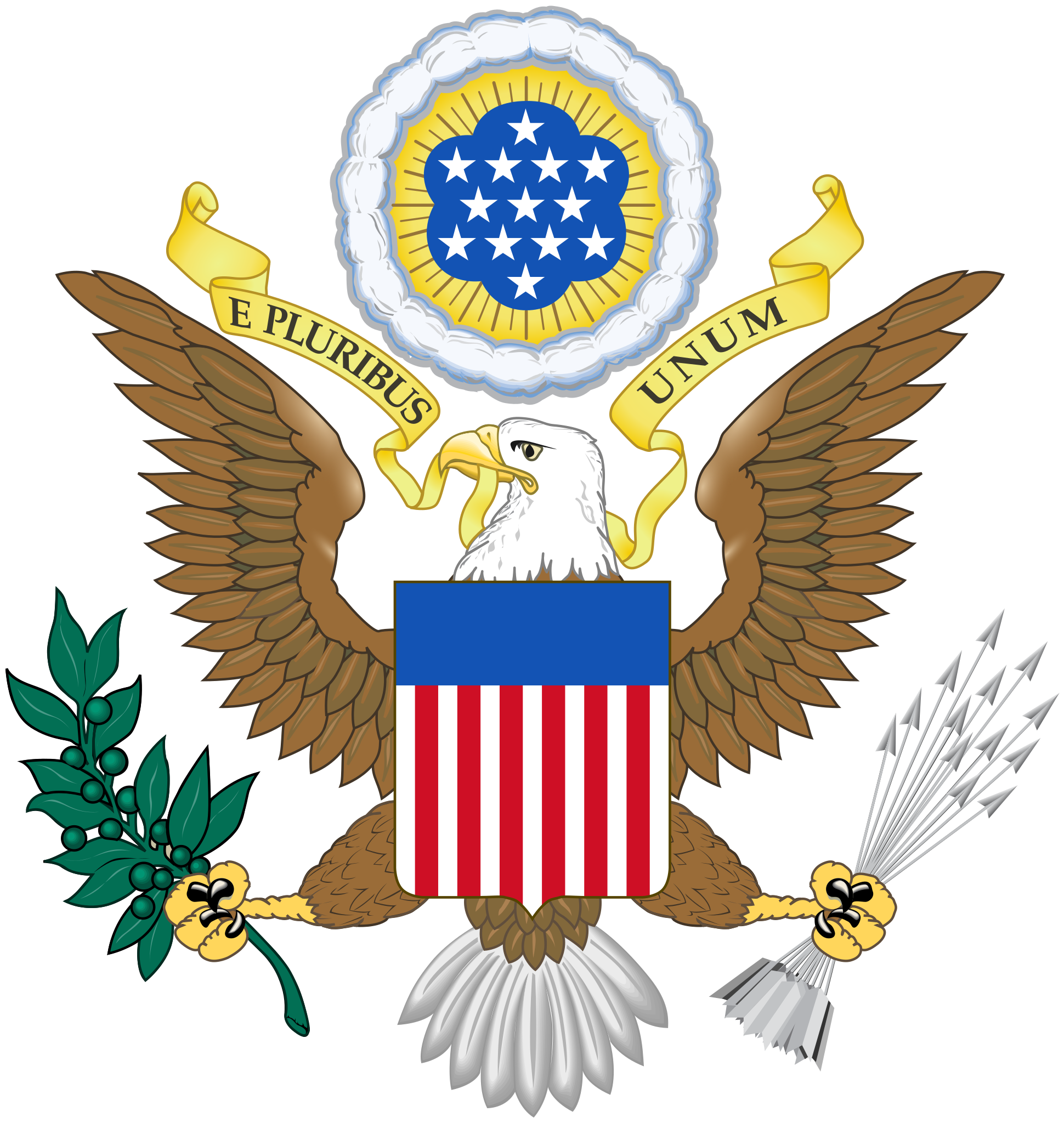 Coat of Arms | |
| Polity type | Federal Corporatocratic Republic |
| Constitution | Constitution of the United States |
| Formation | 1789 |
| Ruling class | Bourgeoisie |
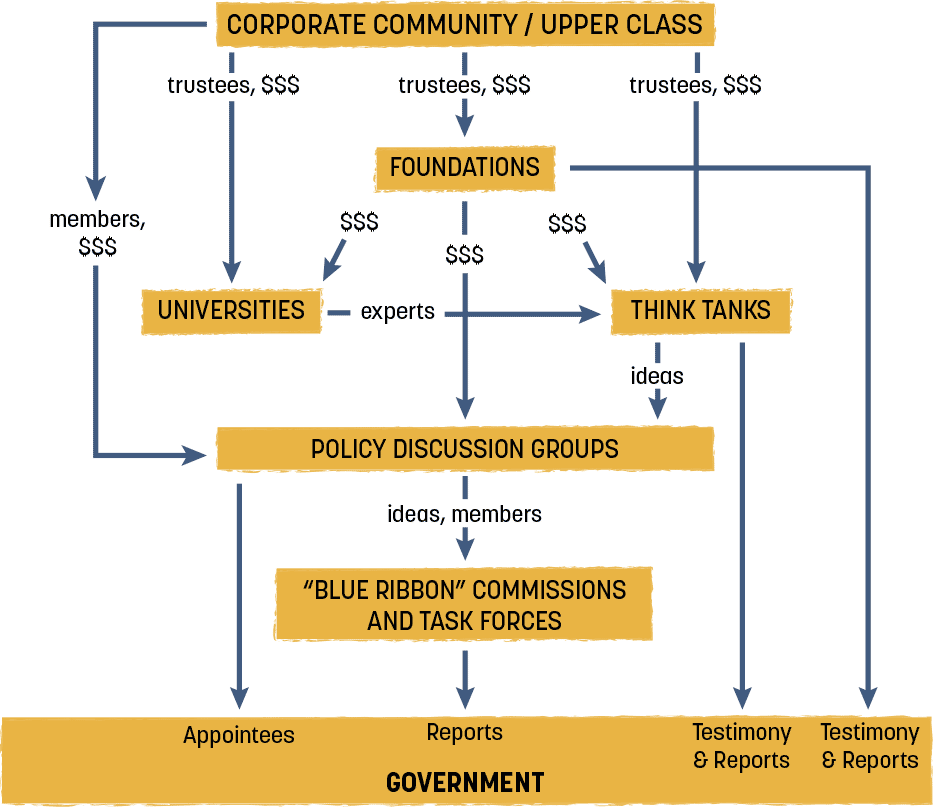
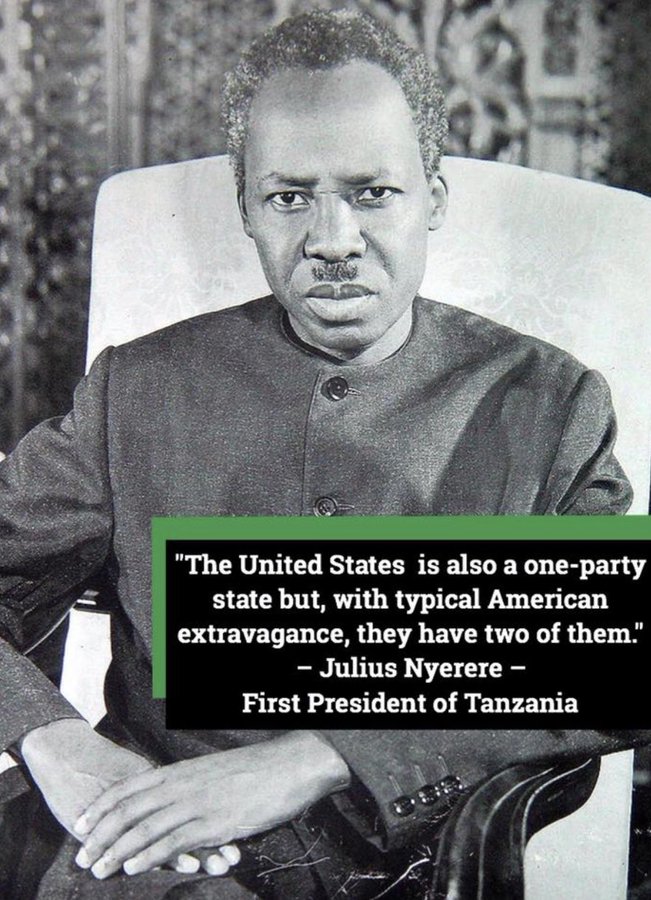
The system of government in the United States of America operates on the basis of a plutocracy, a government entirely controlled by the wealthy. The richest three Statesians have more money than the poorest 160 million combined. Public support for the U.S. government is very low, with only 2% of Statesians believing the government almost always does what is right and only 19% believing it mostly does the right thing. 7% of Statesians have confidence in Congress, 23% have confidence in the presidency, and 25% have confidence in the Supreme Court.[1]
The US is effectively a one-party state, with aesthetical differences between its two main parties, the Republicans and the Democrats, but both parties follow common policies, especially abroad. The ruling capitalist oligarchy has two factions: the Democratic Party which is center-right and is controlled by the monopolistic managerial bourgeoisie who seeks to maintain the stability of the imperialist system by being less reactionary on inconsequential social issues, and the Republican Party, which is more reactionary and backwards when it comes to social issues and tends to pander to the petit bourgeoisie in their effort to deepen the exploitation of labor.
The election system further solidifies this duopoly with its first-past-the-post system, resulting in citizens having to choose "the lesser of two evils." The two political parties stir up public debate around their small disagreements to create a facade of democracy, but bipartisan agreement reigns on questions of foreign policy (imperialism, war, attacking socialist countries) as well as domestic policies such as prioritizing funding for police repression over social programs such as free housing, higher education, healthcare, etc.
The government of the United States of America is, in essence, a standard bourgeois democracy. It has been copied the world over due to its effectiveness in the maintenance of capitalism within a nation, and the ease of trade. It consists of three governmental branches, legislative, executive, and judicial. These branches are defined by acts of Congress, including the creation of executive departments and courts inferior to that of the Supreme Court.
Even in the 21st century, many politicians are descended from the slave-owning elite of the early USA. As of June 2023, about 20% of high-level living politicians are descended from slave owners, including five presidents, two Supreme Court justices, 11 governors, and exactly 100 Congress members.[2]
Legislative branch
The United States Congress, under Article 1 of the Constitution, is the legislative branch of the federal government. It is split into two distinct assemblies, the House of Representatives and the Senate.
House of Representatives
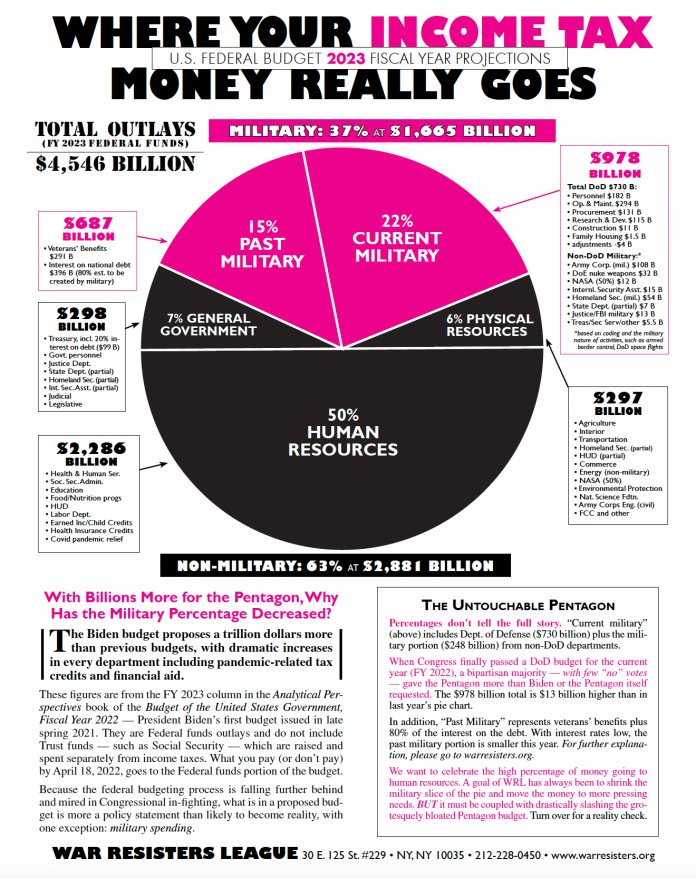
The House represents a congressional district. The number of representatives each state has in the House is based on each state's population as determined in the most recent United States Census.
Senate
The Senate is made up of two senators from each state, regardless of population. There are currently 100 senators (2 from each of the 50 states), each of whom serve six-year terms.
Powers of Congress
The Congress of the United States of America has the power to the powers to levy and collect taxes; to coin money and regulate its value; provide for punishment for counterfeiting; establish post offices and roads, issue patents, create federal courts inferior to the Supreme Court, combat piracy and felonies, declare war, raise and support armies, provide and maintain a navy, make rules for the regulation of land and naval forces, provide for, arm and discipline the militia, exercise exclusive legislation in the District of Columbia, regulate interstate commerce, and to make laws necessary to properly execute powers.
Executive branch
The executive branch is established in Article 2 of the United States Constitution, which vests executive power in the President of the United States.
President
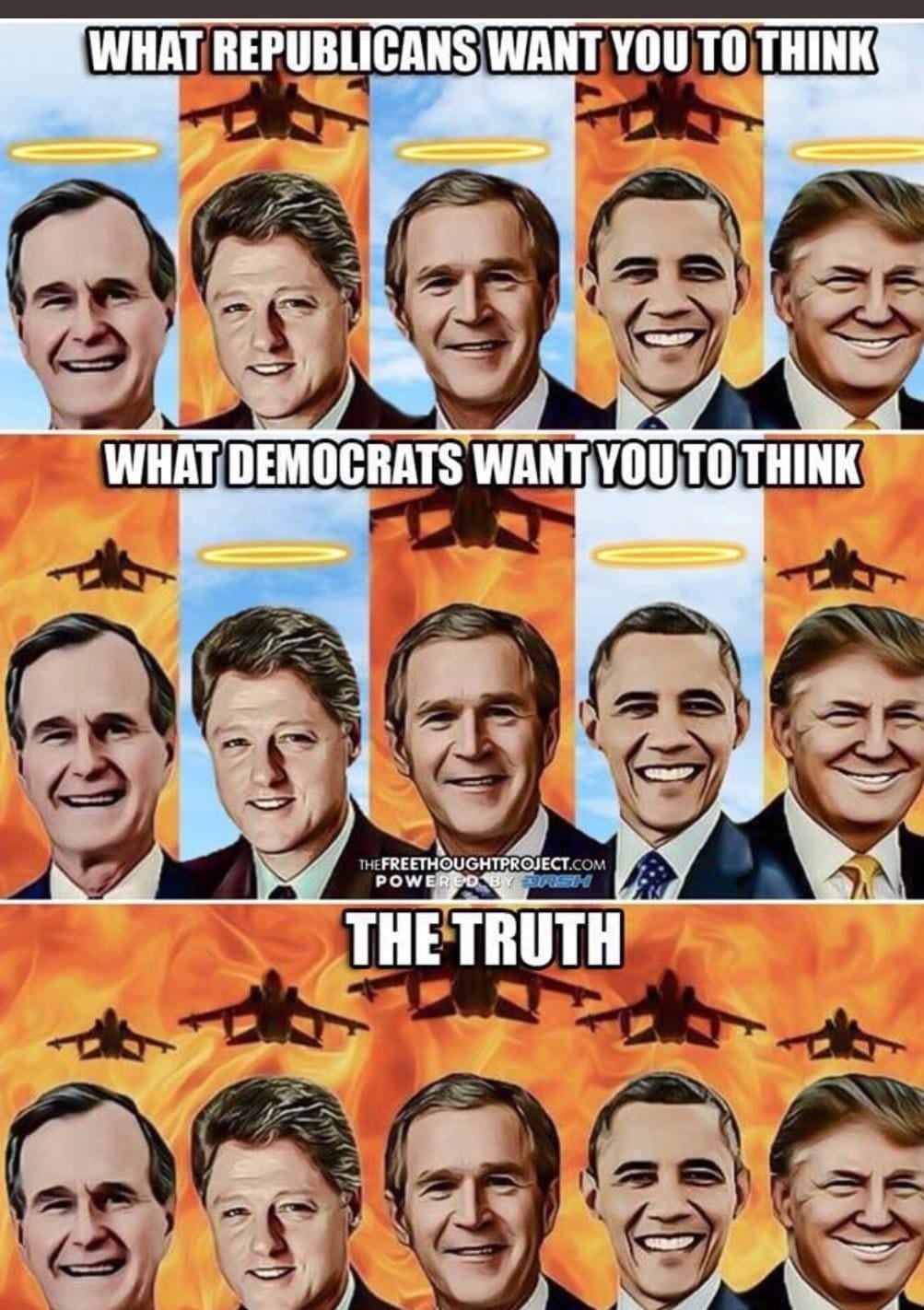
The president of the United States is the lead executive power in the United States of America being both the Head of State (performing ceremonial functions) and the head of government (the chief executive). The Constitution requires the president to swear or affirm to "preserve, protect and defend the Constitution of the United States."[3]
Executive powers
The president is the commander-in-chief of the armed forces, empowered to conduct foreign relations (generally being considered to have sole diplomatic recognition), and may also negotiate and sign treaties. The president may also "... appoint Ambassadors, other public Ministers and Consuls, Judges of the supreme Court, and all other Officers of the United States" as well as grant presidential pardons.
Election, succession, and term limits
The president and vice president are normally elected by the Electoral College, but an individual may also be granted presidency via succession in the case of the death or impeachment of the previous president. The length of a term is four years, though a US president may only run for two.
Cabinet, executive departments, and agencies
The daily enforcement and administration of federal laws is managed by the federal executive departments. These departments are created by Congress to manage specific international and internal affairs, the heads of which are appointed by the United States president with further approval being granted by Congress.
Judicial branch
The Judiciary, under Article 3 of the Constitution, explains, interprets, and applies the laws. It does this by hearing and eventually making decisions on various legal cases.
Political repression
Protests are illegal without government permits. Police often arrest protestors and attack them with chemical weapons.[4]
See also
References
- ↑ Tom Mckay (2016-4-16). "Princeton Concludes What Kind of Government America Really Has, and It's Not a Democracy" MIC. Retrieved 2022-8-30.
- ↑ "Several senior US officials descend from slave owner families: Reuters" (2023-07-27). Al Mayadeen. Archived from the original on 2023-06-27.
- ↑ “...I will faithfully execute the Office of President of the United States, and will to the best of my Ability, preserve, protect and defend the Constitution of the United States.”
Philadelphia Convention (1787). Constitution of the United States of America: 'Article 2, Clause 8; Section 1'. - ↑ Austin Murphy (2000). The Triumph of Evil: 'A Detailed Autopsy of the Collapse of the Superior System in the Divided Germany' (p. 140). [PDF] Fucecchio: European Press Academic Publishing. ISBN 8883980026